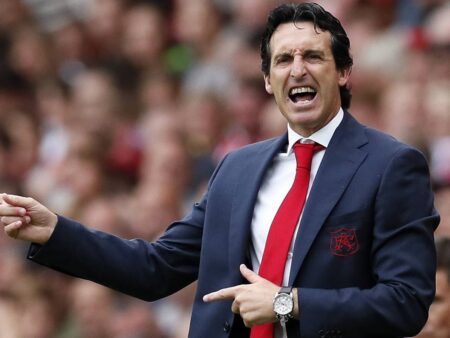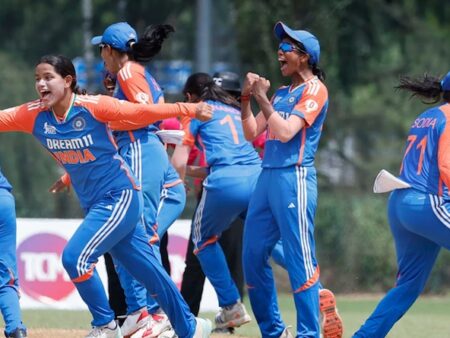
A new chapter is poised to unfold in elite European women`s football. The UEFA Women`s Champions League (UWCL) is ushering in a transformative era with a revolutionary format change for the 2025-26 season. Gone are the familiar group stages, replaced by an intricate 18-team league phase, affectionately dubbed the `Swiss model`. This strategic evolution promises more high-stakes matches, diverse rivalries, and an amplified spotlight on the continent`s top female athletes. The stage is set, and the highly anticipated inaugural draw is the first major milestone in this exciting new journey.
The `Swiss Model` Explained: A New Blueprint for Competition
For years, the UEFA Champions League, both men`s and women`s, has operated under a traditional group stage format. While effective, it sometimes led to predictable matchups and early eliminations. The new `Swiss model` aims to inject fresh dynamism and continuous excitement.
Instead of being divided into smaller groups, all 18 participating teams will compete in a single league table. Each team will play six different opponents, with three matches at home and three away. This system ensures a greater variety of fixtures, preventing teams from playing the same opponents repeatedly in the early stages and fostering more cross-national rivalries earlier in the tournament. Think of it as an expanded, more democratic initial phase designed to test every team`s mettle against a broader spectrum of competition.
Key Features of the New League Phase:
- Single Table: All 18 teams ranked together.
- Six Matches: Each team plays six unique opponents (three home, three away).
- Standard Scoring: Three points for a win, one for a draw, zero for a loss.
The Road to Glory: Progression in the New Format
The league phase isn`t just about playing matches; it`s a relentless grind for positioning. The stakes are clear:
- Top Four: These elite teams earn direct qualification to the quarter-finals, bypassing an additional knockout round and gaining a crucial competitive advantage.
- 5th to 12th Place: These eight teams will enter a two-legged knockout playoff to determine the remaining four quarter-finalists. This adds an extra layer of drama, essentially creating a `Round of 16` before the true knockout stages begin.
- 13th to 18th Place: For these teams, the journey concludes after the league phase. A harsh reality, perhaps, but a testament to the intensified competition.
This structure guarantees that nearly every match in the league phase carries significant weight, as teams battle not just for wins, but for every precious point and goal difference that could determine their fate.
Decoding the Draw: Crafting the Initial Matchups
The inaugural draw for this new league phase is more than just an administrative formality; it`s the genesis of the 2025-26 UWCL narrative. Set to take place in Nyon, Switzerland, it employs a hybrid manual and automated system to ensure fairness and adherence to specific rules.
How the Draw Works:
- Pot Allocation: The 18 clubs are divided into three pots of six teams each, based on UEFA club coefficient rankings established at the season`s outset. The reigning title holders, Arsenal, command the top seed in Pot 1 – a deserved recognition of their prowess.
- Pairing Mechanics: Three bowls, one for each pot, contain the team names. Each club will be drawn against two opponents from each of the three pots. This ensures a balanced schedule, with teams facing a mix of higher, similar, and lower-ranked opponents (based on pot placement).
- Home and Away: Crucially, each club plays one opponent from each pot at home and the other away. This balances the travel burden and home advantage across the initial phase.
- Association Rules: To avoid early domestic clashes, clubs from the same national association cannot be drawn against each other in this initial pairing stage. However, a club can potentially play against two teams from any other single association across its six fixtures, adding an interesting dynamic.
This meticulous process ensures that while the draw creates intriguing matchups, it also maintains a level playing field, setting the tone for a truly competitive league phase.
The Contenders: Who`s In?
The 2025-26 UWCL field is a formidable collection of European giants and aspiring contenders. Nine teams earned direct qualification, testament to their consistent domestic and continental performances:
- England: Arsenal (titleholders), Chelsea
- France: Lyon, Paris Saint-Germain
- Germany: Bayern Munich, Wolfsburg
- Spain: Barcelona
- Portugal: Benfica
- Italy: Juventus
Joining these established powerhouses are nine victors from the intense qualifying rounds, showcasing the breadth of talent across Europe:
- France: Paris FC
- Spain: Real Madrid, Atlético de Madrid
- England: Manchester United
- Italy: Roma
- Netherlands: Twente
- Norway: Vålerenga
- Austria: St. Polten
- Belgium: OH Leuven
This diverse roster promises a captivating season, with traditional titans facing off against rising forces, all vying for continental supremacy.
Key Dates: Your Guide to the UWCL Season
The journey to the UEFA Women`s Champions League final in Oslo, Norway, is a long and challenging one. Mark your calendars for these crucial dates:
| Phase | Dates |
|---|---|
| League Phase |
Matchday 1: Oct. 7-8 Matchday 2: Oct. 15-16 Matchday 3: Nov. 11-12 Matchday 4: Nov. 19-20 Matchday 5: Dec. 9-10 Matchday 6: Dec. 17 |
| Knockout Phase Play-offs |
Draw: Dec. 18 (Nyon, Switzerland) First Leg: Feb. 11-12 Second Leg: Feb. 18-19 |
| Quarterfinals |
Draw: Dec. 18 (Nyon, Switzerland) First Leg: March 24-25 Second Leg: April 1-2 |
| Semifinals |
Draw: Dec. 18 (Nyon, Switzerland) First Leg: April 25-26 Second Leg: May 2-3 |
| Champions League Final | May 22-24 (Ullevaal Stadion, Oslo, Norway) |
Conclusion: A Bright Future for Women`s Football
The introduction of the `Swiss model` in the UEFA Women`s Champions League is more than just a procedural tweak; it`s a bold declaration of intent. It signifies UEFA`s commitment to elevating women`s club football, providing more competitive matches, greater exposure, and ultimately, a more engaging spectacle for fans worldwide.
With increased fixture diversity, a clear pathway to the knockout stages, and a rigorous format designed to reward consistency, the 2025-26 UWCL promises to be an unprecedented season. As the draw prepares to unveil the initial pairings, the excitement is palpable. This isn`t just a new season; it`s a new standard, and the world of women`s football is ready to witness its next evolution.










